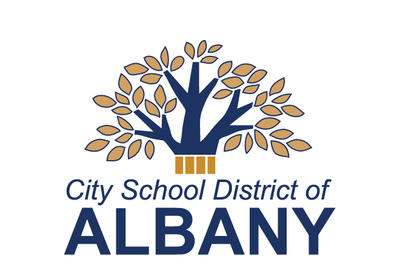
Kindergarten expectations
New York State learning standards outline what a student should know and be able to do by the end of the grade level. There are also additional skills that a well-rounded student should possess. Listed below are examples of academic expectations for kindergarten students. These should be viewed holistically and are not meant to determine promotion or retention; a student may demonstrate or be on track for proficiency without having mastered every skill. Teachers intervene as appropriate to support skills development.
- Recognize and produce rhyming words (e.g., know hat and pat rhyme)
- Blend and segment syllables in spoken words (e.g, tomorrow has three)
- Blend and segment individual sounds (phonemes) in spoken, one-syllable words (e.g., tap = /t/ /a/ /p/)
- Understand that speech sounds are represented by specific letters in print
- Recognize and name all upper- and lowercase letters
- Produce the most common sounds for each consonant (e.g., /k/ for c)
- Recognize the difference between letter sounds and letter names
- Read high-frequency words by sight (e.g., the, you, does)
- Recognize characteristics of reading and print (e.g., read from left to right)
- Name the author and illustrator and explain what they do
- With support, identify main idea and supporting details in texts
- With support, retell stories and identify characters, settings and events
- Follow agreed-upon rules of conversation (e.g., take turns speaking)
- Express thoughts, feelings and ideas clearly and in complete sentences
- Ask/answer questions to demonstrate understanding or seek clarification
- Determine the meaning of unknown and multiple-meaning words
- Sort common objects into categories (e.g., shapes, colors, size, use)
- Relate verbs and adjectives to their opposites (antonyms) (e.g., stop/go)
- Write most upper- and lower-case letters
- Write a letter(s) to represent most consonant and short-vowel sounds
- Sound out spellings for simple words
- Capitalize the pronoun I and the first word in a sentence
- Use drawing, dictating, and writing to
- State an opinion about a familiar topic; provide a reason to support
- Name a familiar topic and give information about the topic
- Narrate an event or events in a sequence
- Grade Level Fluencies: Add and subtract within 5; count to 100 by ones and tens
- Geometry
- Identify and describe shapes (e.g., circles, spheres, triangles, squares)
- Analyze, compare, create and compose shapes
- Counting and Cardinality
- Know number names and the counting sequence
- Count to tell the number of objects
- Compare numbers
- Operations and Algebraic Thinking
- Understand addition as putting together and adding to
- Understand subtraction as taking apart and taking from
- Number and Operations in Base Ten
- Work with the numbers 11-19 to gain foundations for place value
- Measurement and Data
- Describe and compare measureable attributes
- Classify objects and count the number of objects in each category
- Understand and apply scientific concepts related to Physical, Earth, and/or Life Science
- Demonstrate mastery of skills involved in scientific measurements (including units) using age-appropriate scientific equipment
- Demonstrate understanding of the scientific process and science concepts using scientific inquiry
- Examine similarities and differences between children, families and communities
- Compare ways diverse cultural groups within the community and nation celebrate holidays
- Demonstrate respect for others and understand individual rights and responsibilities
- Analyze geographical concepts such as maps and globes, physical features and man-made structures
- Make independent decisions guided by the elements/principles of art
- Develop technical skills, select materials/tools/media to serve creative intent
- Explore, examine, experiment and describe art concepts between different cultures as prompted by the teacher
- Maintain tone, pitch, rhythm, tempo and dynamics while singing
- Use instruments in creating and performing music
- Describe, demonstrate and discuss musical ideas such as melody, rhythm, harmony, form and style from various cultures as prompted by teacher
- Perform basic motor and manipulative skills and movement patterns
- Show competence in a variety of physical activities
- Demonstrate safe and responsible personal and social behavior
Keep your child engaged at home
The following are simple every day activities you can do at home and in the world to help support what your child is learning during the school day.
- Read to your student every day; choose books with rich vocabulary that are about two levels more difficult than your student could read without help. Stop every few pages and ask your student to retell parts of the story.
- Listen to your student read aloud; choose books with easy to sound out and/or high frequency words while they are first learning.
- Say a word and ask your student to name its opposite (hot/cold, up/down, yes/no).
- Play rhyming games; read or say nursery rhymes together.
- Clap for each syllable in a word
- (e.g., ba/na/na has three syllables).
- Practice writing and naming letters.
- Help your student practice high frequency words using a word list from school.
- Practice sorting objects into categories (e.g., shape, color, use).
- Practice adding and subtracting within 5 using flash cards.
- Pose simple addition and subtraction problems to your child, expecting a quick response.
- Look for shapes around you
- (e.g., That table is a rectangle!).




